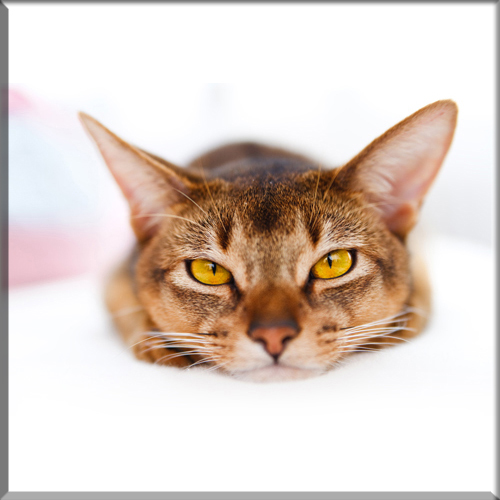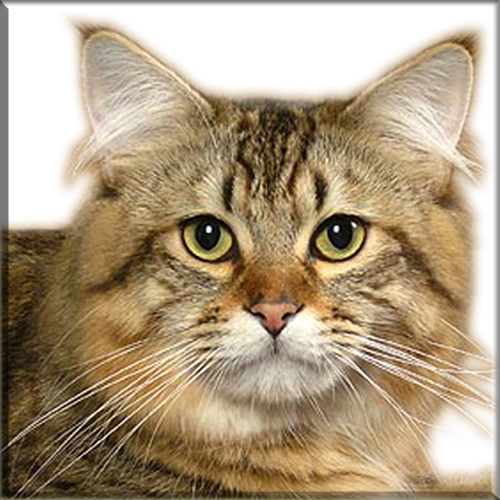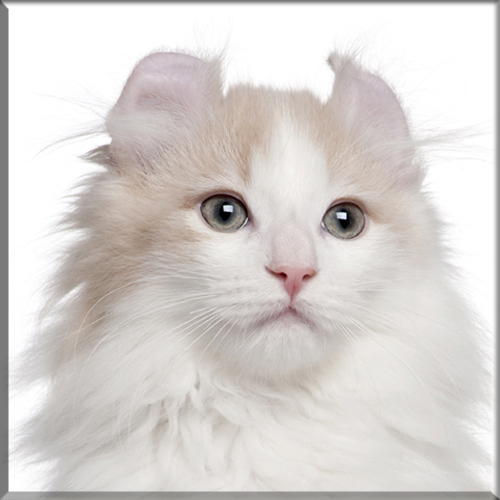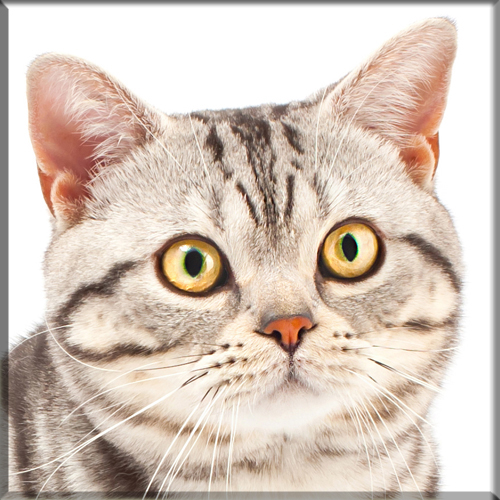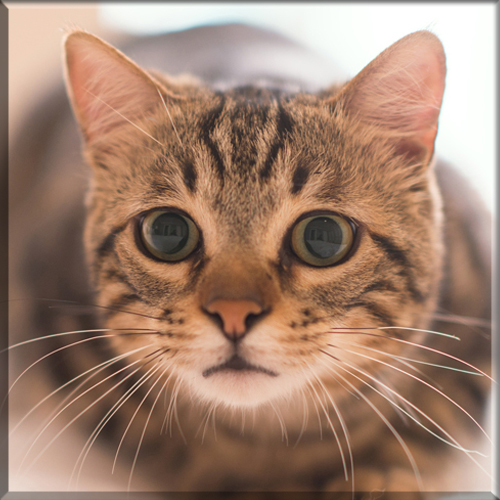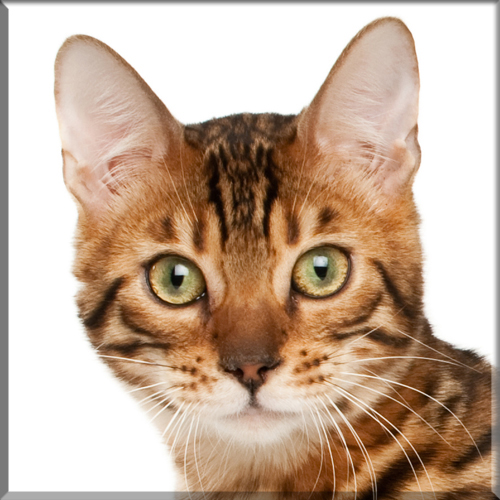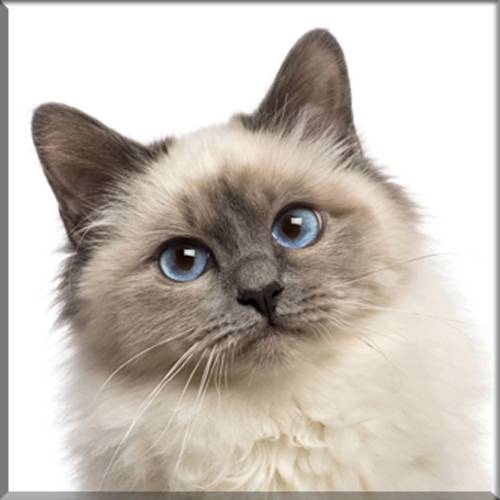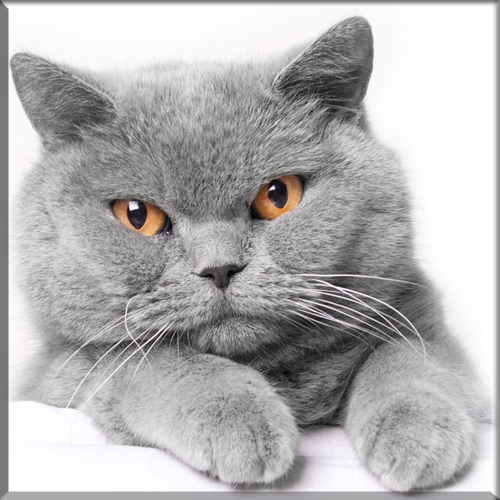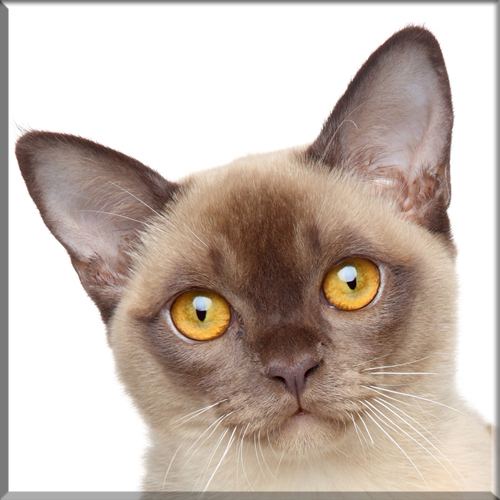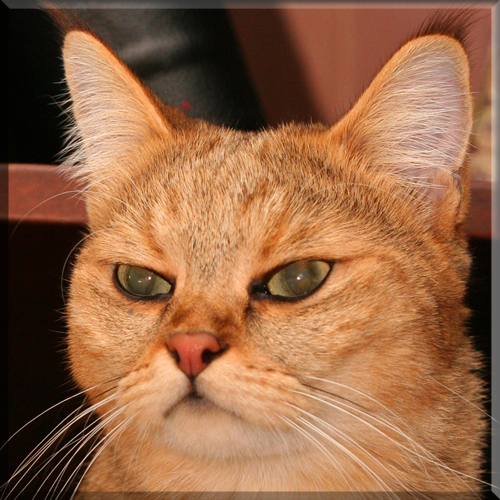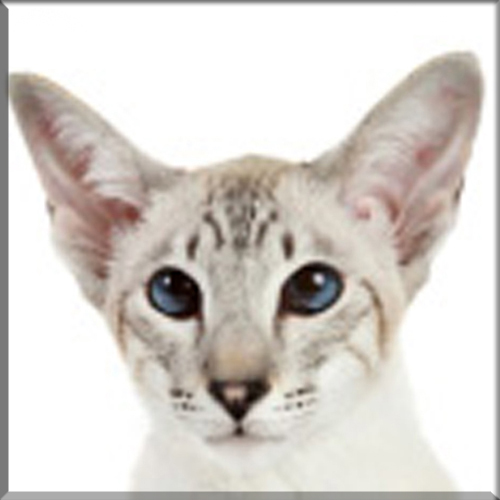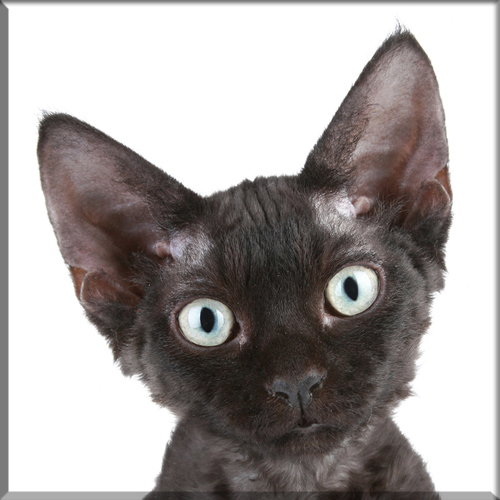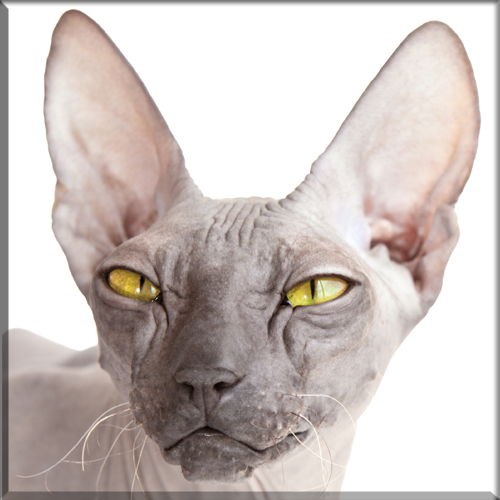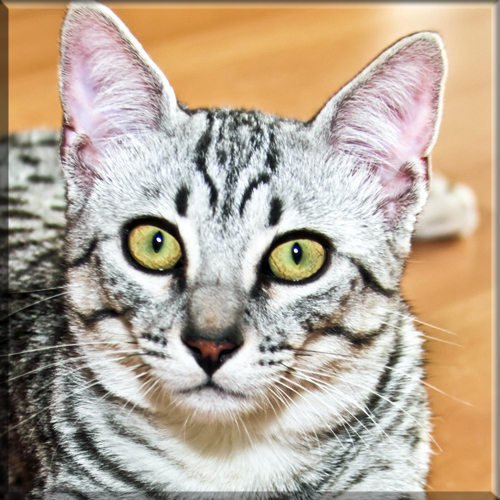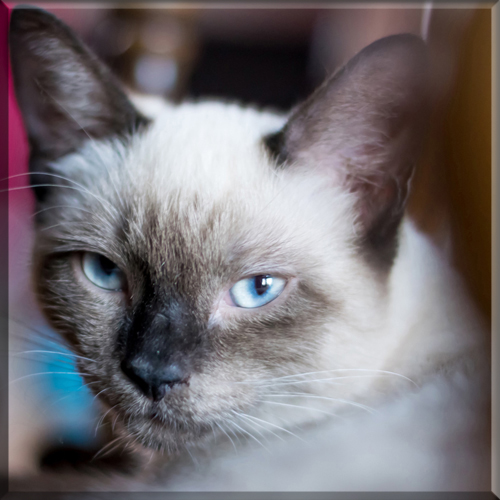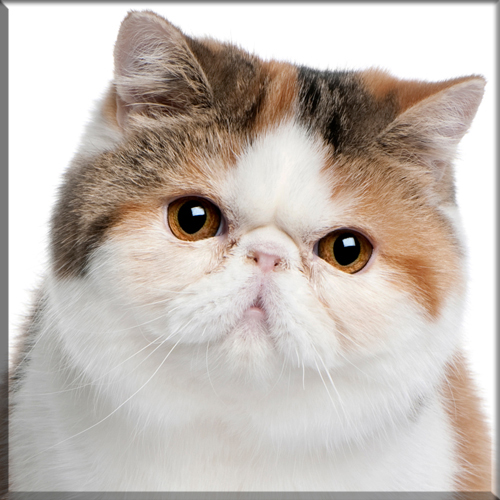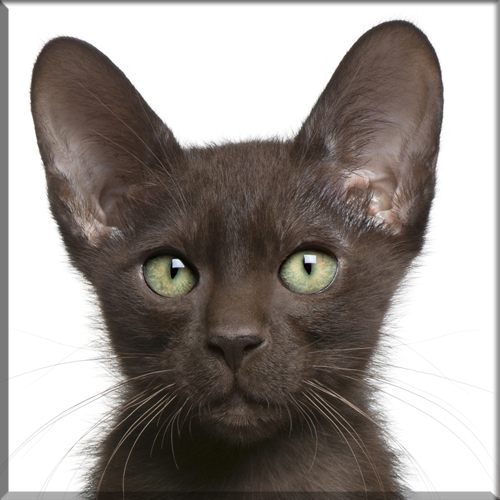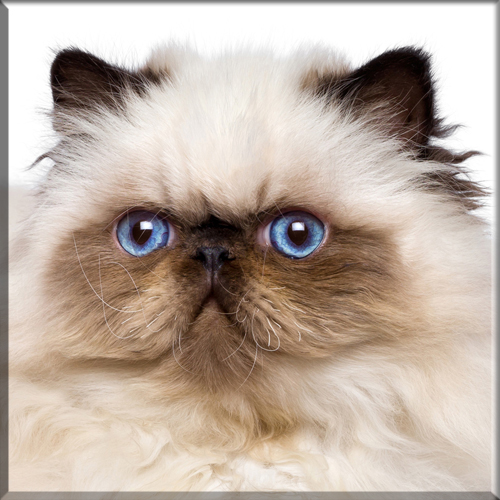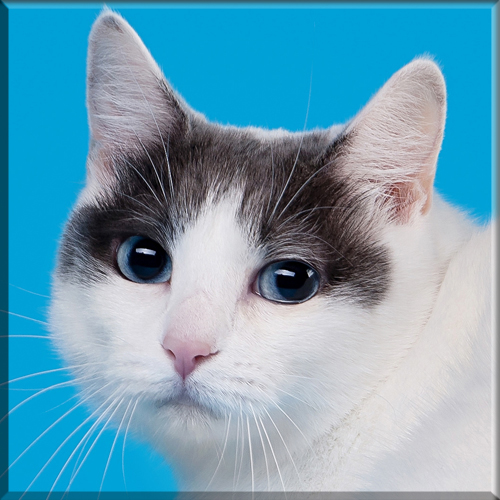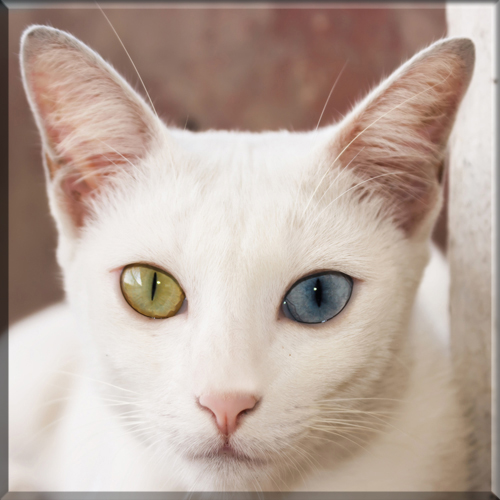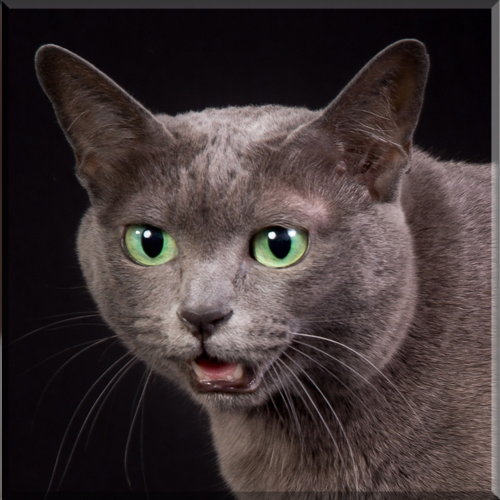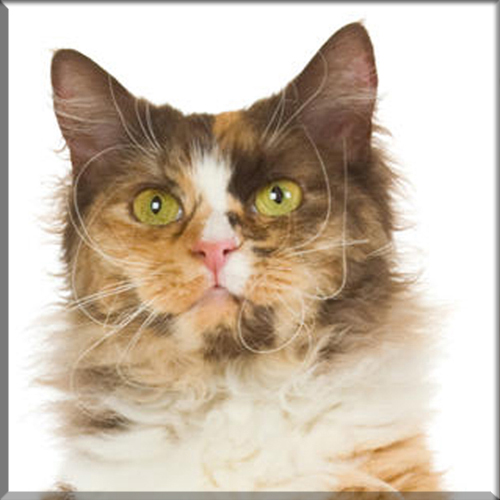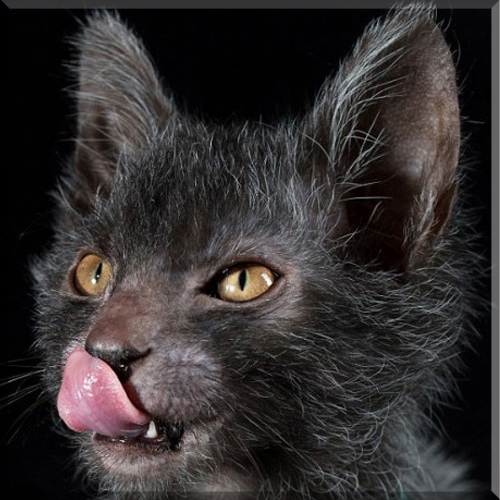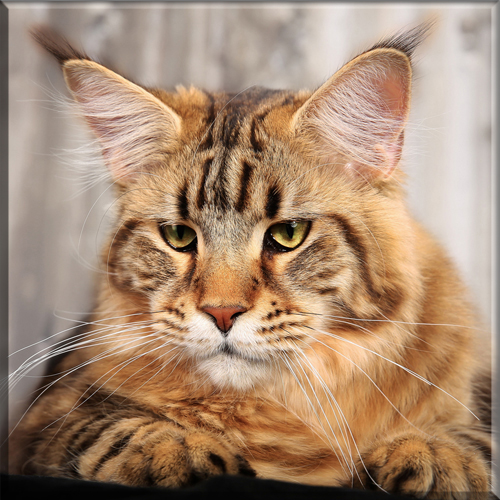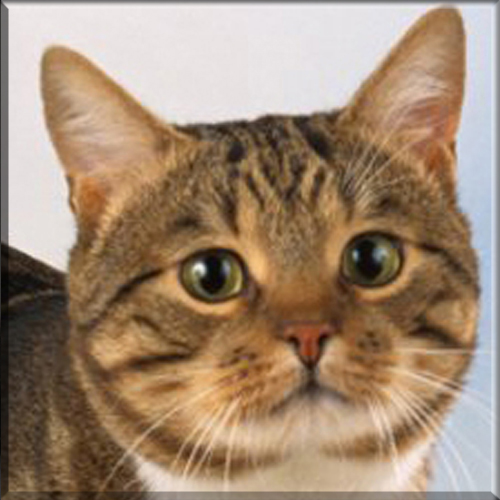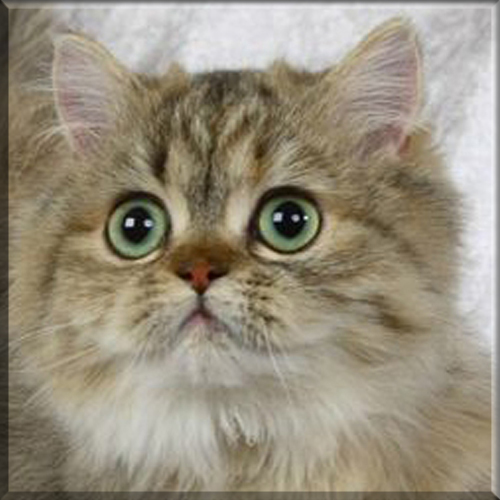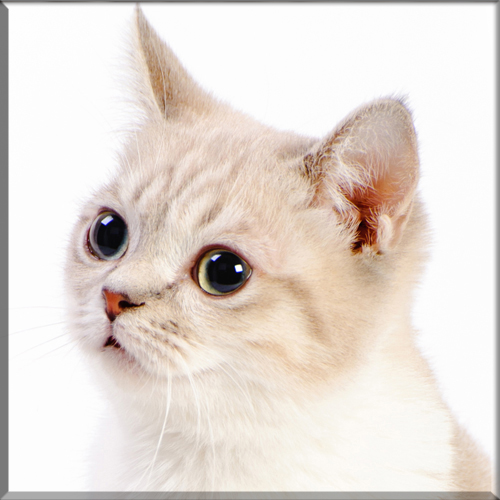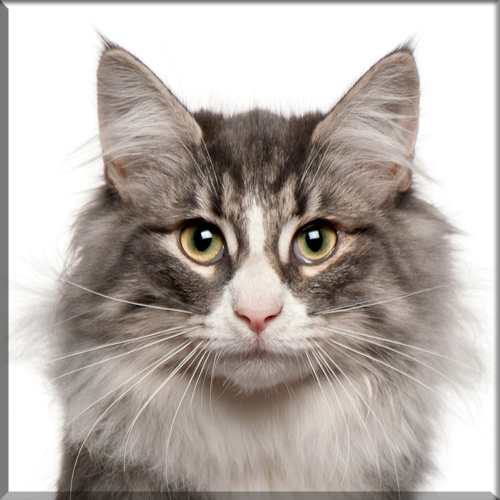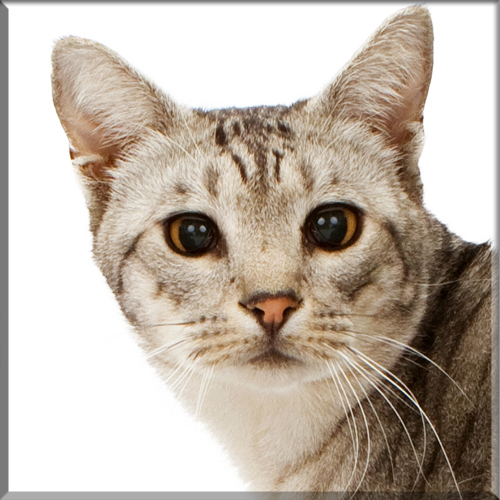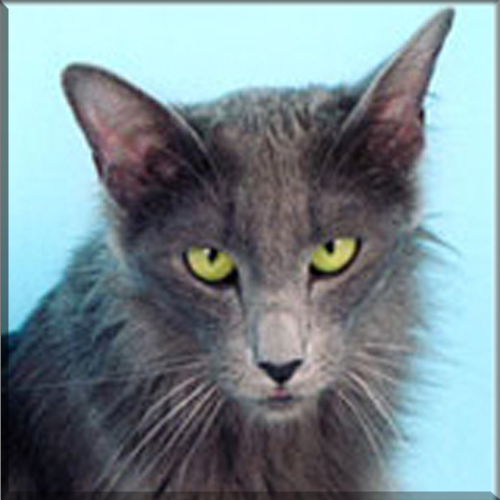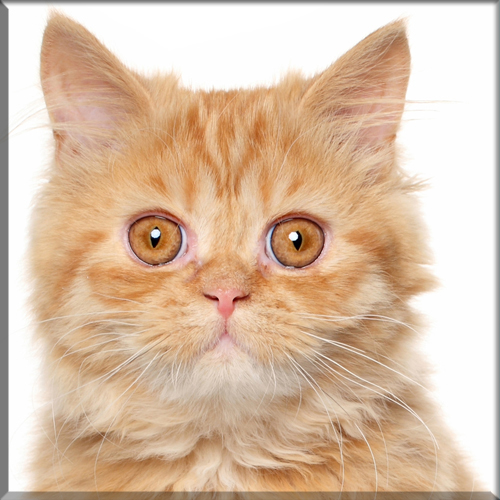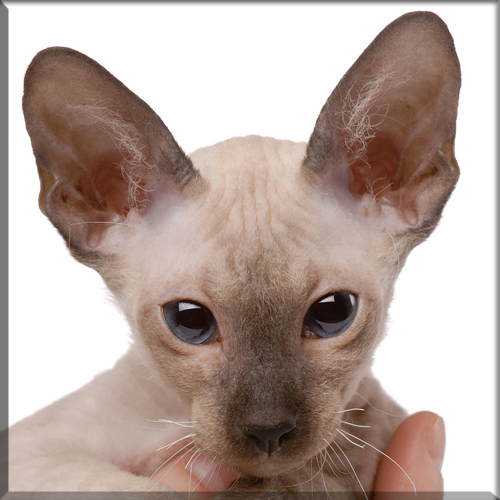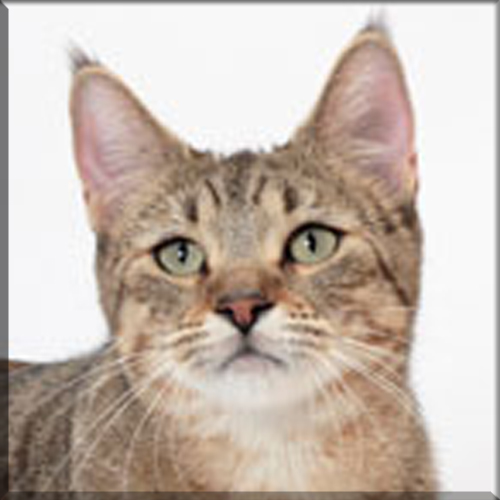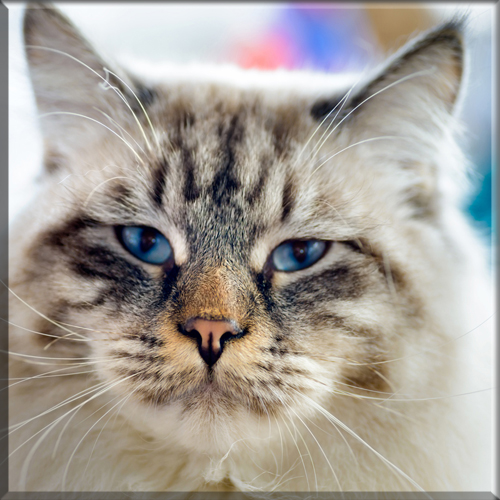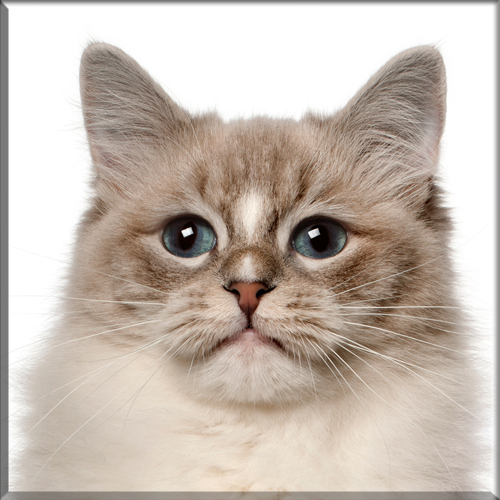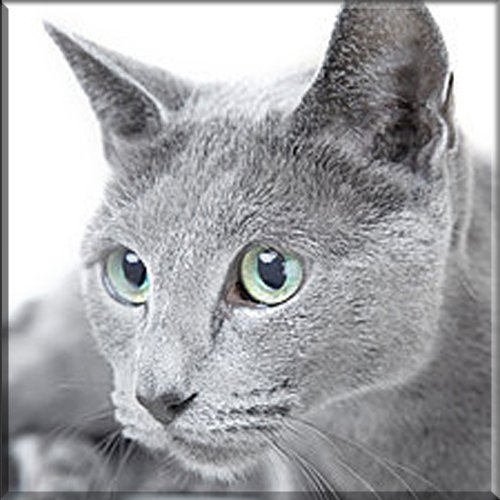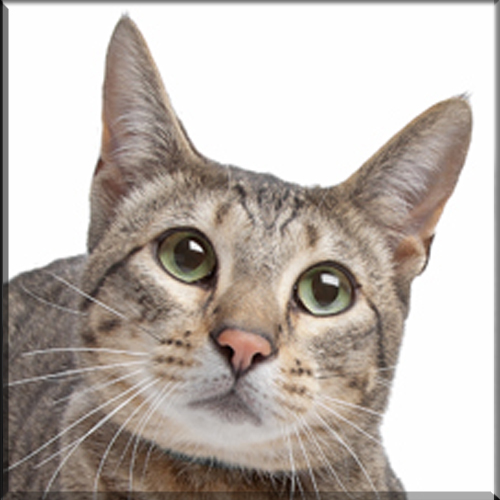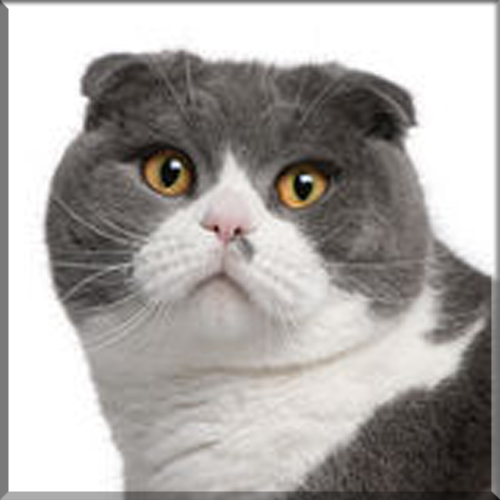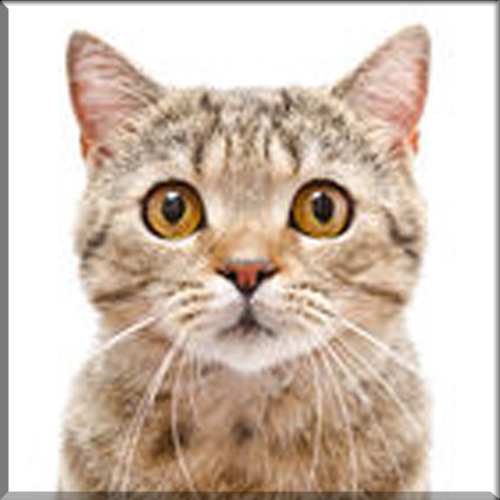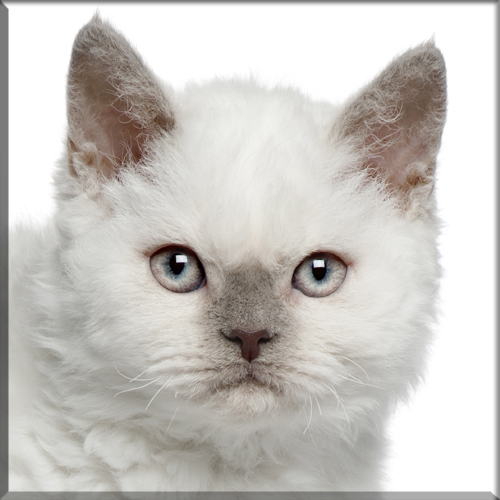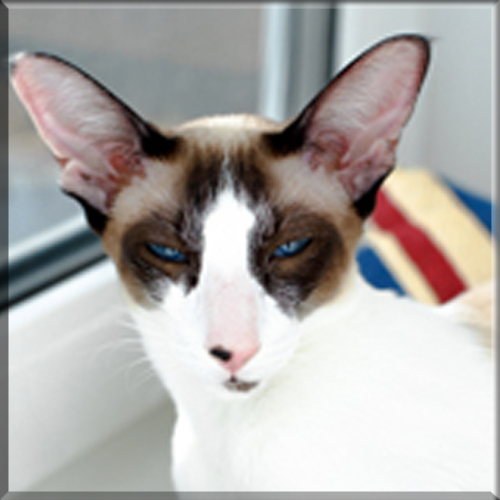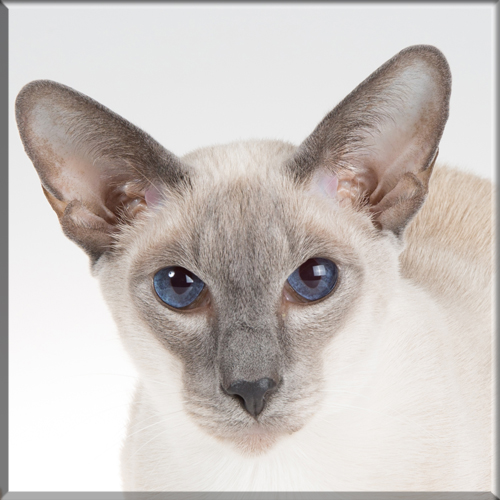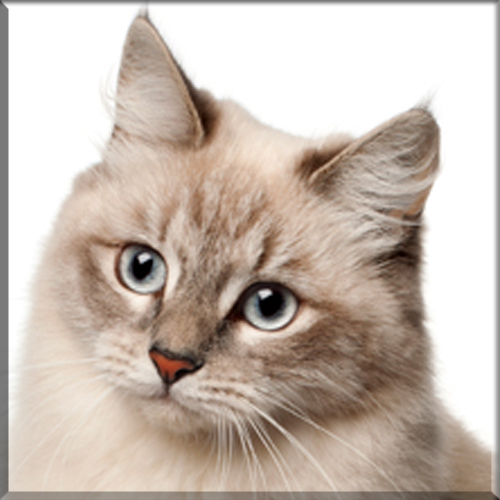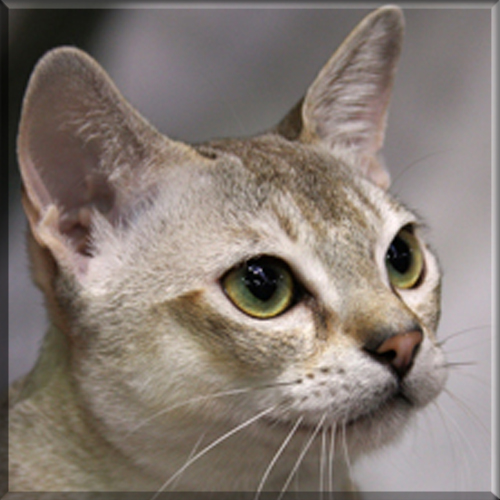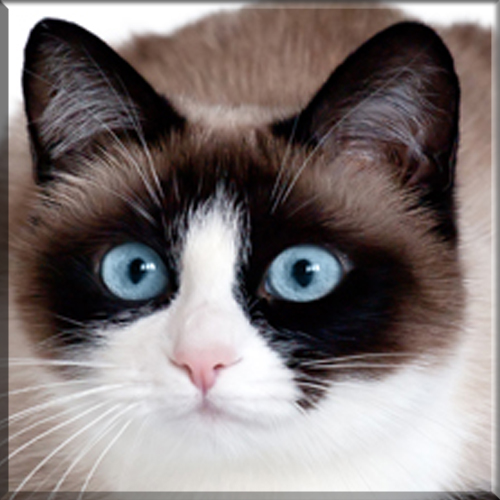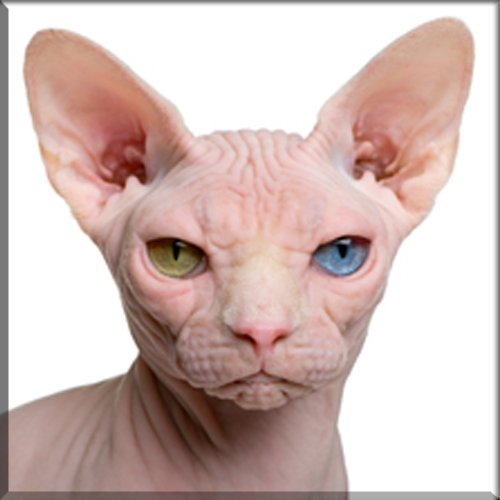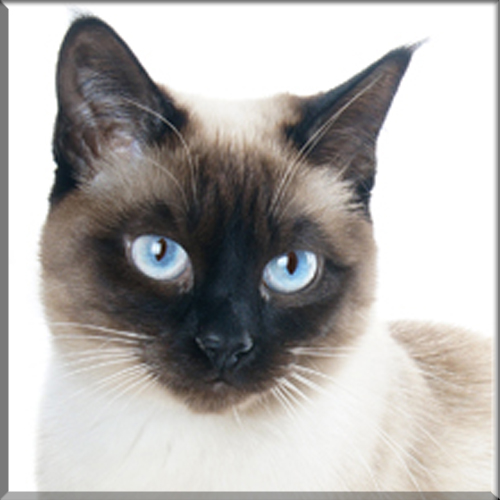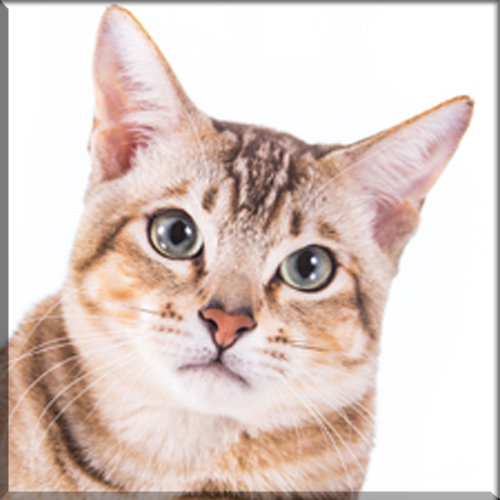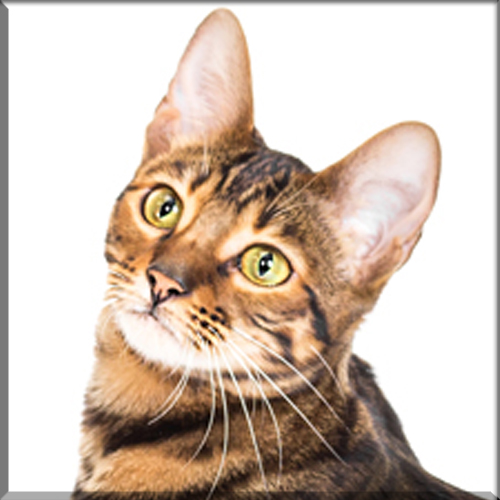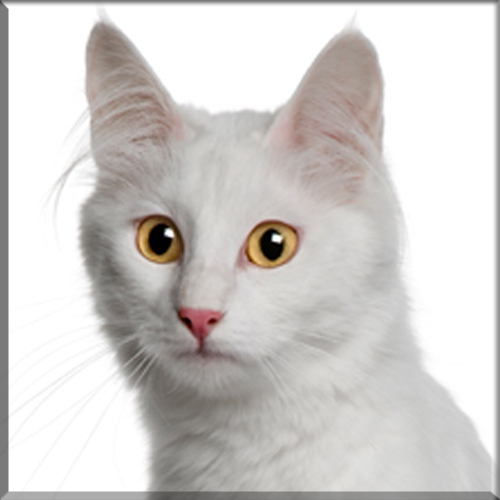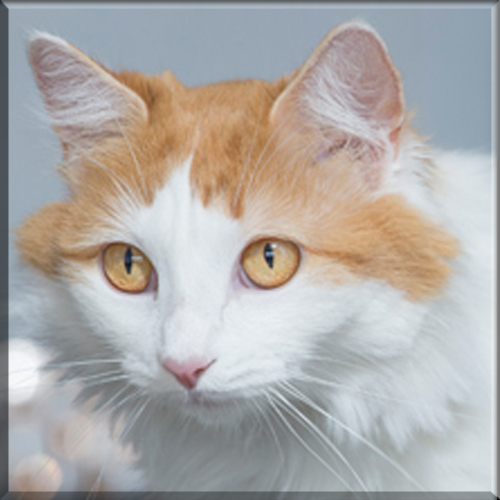Burmese
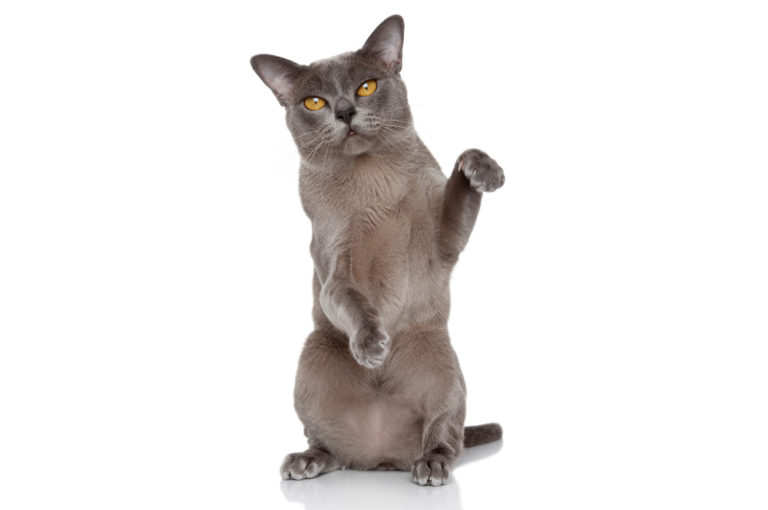
Appearance and features:
Soft-spoken cats, Burmese have little trouble making their wishes known. There are 2 different standards for the Burmese. The American-type and the European type. The American-type Burmese, also known as the “Contemporary”, is a stockier, broader boned cat, with a shorter muzzle and wider ear set and round eyes. Where the European-type has a more slender, longer body, with a wedge shaped head, a longer pointy muzzle and larger pointed ears with almond shaped eyes.
Their silky coat on either standard cat choice does not shed much and is easy to groom with weekly brushing.
Size:
Burmese are a small to medium size breed, though they can carry more weight to them then their size appears. Averaging about 8-12 pounds in size.
Family:
Originally from Thailand, Burmese cats can follow their lineage to a feline named Wong Mau, who was brought to the United States during the 1920s. She is now thought to have been a cross mix of the Burmese-Siamese cats.
Coloring:
While the Burmese original coloring was a seal sepia, or sable, with a rich, short, glossy dark brown coat, they now come in a variety of other colors (not yet recognized in All associations) from a warm blue to a pinky-grey lilac to a soft chocolate, platinum, or tortie colors. These newer colors are rapidly becoming as popular as the original sable brown.
Origin:
The principal endeavor to intentionally build up the Burmese in the late nineteenth century in Britain brought about what were known as Chocolate Siamese instead of a breed in their own right; Empowering crossbreeding among Burmese and Siamese trying to all the more intently adjust to the Siamese form, the breed accordingly gradually ceased to exist in Britain.
Dr. Joseph Thompson, was given a solitary chocolate-hued feline, Wong Mau, who believed the feline’s form to be adequately not quite the same as the Siamese and to have potential as a completely discrete breed. Charmed by the little chocolate-dark colored feline with the darker brown focuses, Thompson started a rearing system, utilizing seal-point Siamese since he had no entrance to different felines of Wong Mau’s sort (which was thought by certain raisers to just be a dim assortment of Siamese). Wong-Mau was reproduced with Tai Mau, a seal point Siamese, which created a few little cats that resembled Siamese and others that took after herself. Then Wong-Mau was mated to one of her own kittens with darker shading and dim focuses, this mating brought about cats with three looks: A Siamese looking offspring, a dim dark colored with focuses like Wong Mau, and a dim darker without any focuses. The darker little cats without any markings turned into the establishment of what is currently known as the Burmese.
On Mar 29 1955, the first blue Burmese kitten, Sealcoat Blue Surprise, was conceived in England. Felines other than sable had seemed before, yet most Burmese reproducers reared just the sable felines. It is presently accepted that Wong Mau is now believed to have been a Burmese-Siamese cross herself which is where the presence of chocolate, blue and lilac little cats. The red factor was included later in Europe. This early crossbreed type was later created as a different breed, referred to today as the Tonkinese. Burmese felines have likewise been instrumental in the improvement of the Bombay and the Burmilla, among others.
Temperament:
Burmese are very sweet-natured people-arranged breed, industriously vocal, keeping up their kitten like energy into adulthood. Burmese are social felines who flourish with the friendship of their family or different pets. So if you have a busy family, and you will away for extensive stretches of time, you should need to consider two so they will be company for each another. Profoundly wise, Burmese frequently figure out how to follow commands, such as, ‘fetch’ and ‘tag. Therefore, it is best to provide him with riddle toys that will compensate him with kibble or treats when he figures out how to control them.
Health Concerns:
Burmese cats in Europe and Australia are at increased risk of diabetes mellitus compared to other breeds. American Burmese do not share this increased risk, due to the genetic differences between American Burmese and other Burmese. Also known to be effected by cranial distortions, glaucoma or cat hyperesthesia disorder, which results in an expanded affectability to contact or excruciating improvements. They may likewise be inclined to calcium oxalate stones in the urinary tract.
Breed Characteristics
Here is a helpful guide for the different characteristics of the breed. On a Scale of 1-5. 1 being very low level to 5 being high level.
Hypoallergenic: Yes
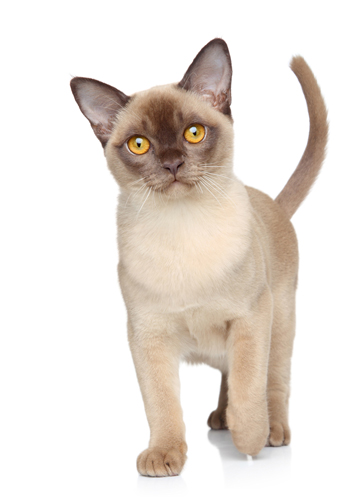
Breeders With Currently Available Kittens
All The Cat Breeds
- Abyssinian
- American Bobtail
- American Curl
- American Shorthair
- American Wirehair
- Balinese
- Bengal
- Birman
- Bombay
- British Shorthair
- Burmese
- Burmillia
- Charteux
- Chausie
- Colorpoint Shorthair
- Cornish Rex
- Devon Rex
- Donskoy
- Egyption Mau
- European Burmese
- Exotic
- Havana Brown
- Highlander
- Himalayan
- Japanese Bobtail
- Khao Manee
- Korat
- LaPerm
- Lykoi
- Maine Coon
- Manx
- Minuet / Napolean
- Munchkin
- Norwegian Forest Cat
- Ocicat
- Oriental Longhair
- Oriental Shorthair
- Persian
- Peterbald
- Pixie Bob
- Ragamuffin
- Ragdoll
- Russian Blue
- Savannah
- Scottish Fold
- Scottish Straight
- Selkirk Rex
- Seychellois
- Siamese
- Siberian
- Singapora
- Snowshoe
- Somali
- Sphynx
- Thai
- Tonkinese
- Toyger
- Turkish Angora
- Turkish Van

